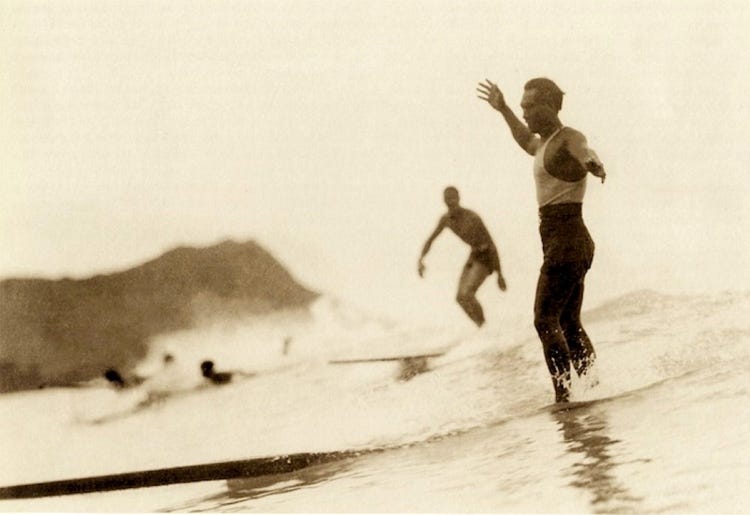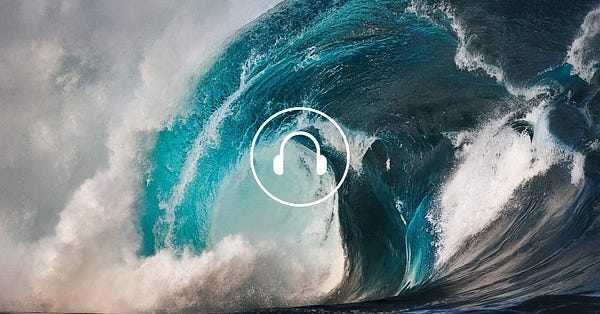🌱Fieldnotes in Environmental Communication: Week of March 6, 2021:
'placeful understanding' + Rebecca Solnit on 'uncertainty' in taking environmental action + The Fisherman's Son + More!

Hi everyone, welcome back to Wild Ones, a bi-weekly digest by me, Gavin Lamb, about news, ideas, research, and tips in environmental communication. If you’re new, welcome! Today, is my (a little belated) weekly update, I share my ‘fieldnotes’ in ecowriting and environmental communication, with ideas, tips, and tools I’m exploring at the moment. You can read more about why I started Wild Ones here. If you’re enjoying this digest, why not sign up here to get these digests in your inbox?:
📚 What I’m reading
William Finnegan on Surf Writing and Winning a Pulitzer. An interview by Matt Skenazy in Outside Magazine.
A couple of years ago, I read William Finnegan’s autobiography, ‘Barbarian Days: A Surfing Life,’ which won the 2016 Pulitzer Prize. It’s a fascinating book, and I recommend it whether you surf or not because of Finnegan’s knack for telling the story of some of the most famous surf breaks around the world, and what it feels like to surf them.
Finnegan is an American journalist who mostly covers political conflicts around the world for the New Yorker. But in 2015, he surprised everyone with a memoir about his secret life as a surfer.
He held off on writing about his surfing for a long time because, as he explains in his book ‘Barbarian Days,’ he thought people wouldn’t take him seriously as a political journalist if they knew he was a surfer. Turns out his fear was unfounded and nobody really cared. In fact, it was actually his surf writing that got him the most attention.
I wanted to share this short interview with Finnegan because it raises some interesting questions for me about environmental writing and communication:
How do we write about the ‘outdoor activities’ we engage in – from gardening, swimming, and kayaking, to jogging, rock climbing, and surfing – that, for many of us I imagine, form the basis of our connection to the particular places we care about in the world?
And how do we communicate our experiences of these places – as walkers, hikers, surfers, skaters, kayakers, swimmers, etc… – to people who have never engaged in these activities, or been to those places before?
In asking Finnegan similar questions about surfing, the Outside Magazine interviewer Matt Skenazy also introduces a neat phrase I hadn’t heard before: ‘placeful understanding.’
Interviewer: Friends of mine who don’t surf have read the book and said something like, "Oh, I get it now." Was that part of your intention, to let outsiders in on this world?
Finnegan: Yep. It’s written for the general reader, who’s usually not a surfer. I try to ease people into the water, keep them oriented, introduce the terms of art without dumbing things down. Give readers a stake in every surf scene, not necessarily through the action, but through the characters, or through the character of the break—every spot is different, as you know, and some are Shakespearean, worth a book in themselves. Try hard not to let readers get confused or bored.
…
Interviewer: Are there any other sports or life activities that require the same sort of sense of placeful understanding that surfing does?
Finnegan: Rock climbing? Backcountry skiing? Bow hunting? Maybe whitewater kayaking or dry fly fishing, I’m not sure. That phrase “placeful understanding” hurts my ear but it nails the concept. Surfing requires the most accurate and dynamic possible reading of a small patch of coast, a force field of moving water and natural violence. Getting it wrong has immediate, occasionally painful consequences. Getting it right can test the upper limit of bliss. And it usually takes a dogged, longitudinal study, pursued through seasons and years and all possible combinations of wind and tide and swell, just to begin to get a place wired. Surfing well is reading the ocean well, plus some hard-earned physical skills.
🎧 What I’m listening to


And also…
Relistening to this fascinating interview with writer Rebecca Solnit. Across the many topics they cover in this hour-plus-long conversation, Solnit describes her writing on the aftermath and well-spring of environmental activism following Hurricane Katrina in New Orleans. Stepping back a bit, she reflects,
“People in this culture love certainty so much. And they seem to love certainty more than hope — which is why they often seize on these really kind of bitter, despondent narratives that are they know exactly what’s going to happen. And that certainty just seems so tragic to me. I want people to tell more complex stories and to acknowledge that sometimes we win and that there are these openings. But an opening is just an opening. You have to go through it and make something happen. And you don’t always win, but if you try, you don’t always lose.”
👀 What I’m watching
The Fisherman's Son: The Spirit of Ramon Navarro. “Born and raised at Punta de Lobos, Ramón Navarro found his passion riding the biggest waves on the planet. But his accomplishments in giant surf are just one part of a bigger vision to protect the culture and environment of the Chilean coast.”
💬 Quotes I’m thinking about
“Transformation comes about as much because of pervasive changes in the depths of the collective imagination as because of visible acts, though both are necessary. And though huge causes sometimes have little effect, tiny ones occasionally have huge consequences.”
–Rebecca Solnit, cited by Robert Macfarlane in his esssay New Words on the Wild.

✏️ Writings from my desk
Living Together On A Planet In Crisis: Environmental Philosopher Deborah Bird Rose On The Need For ‘More-than-Human’ Storytelling In A Time Of Crisis
The Life and Death of Bear 71: Can anthropomorphism serve as a wildlife conservation tool?
Thanks so much as always for your interest in my work, and if you found this digest useful, please consider sharing with others who might find it interesting too😊 I'd also love to hear from you. Leave a comment to let me know what you think about this digest:)



